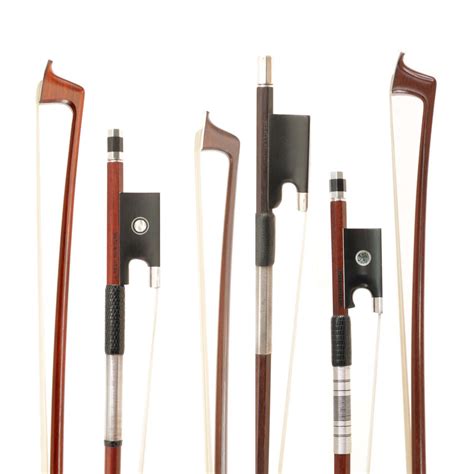How to Choose the Right Violin Bow: A Comprehensive Guide
Choosing the right violin bow can significantly impact your playing experience. A well-matched bow enhances tone, responsiveness, and overall playing comfort, while a poorly chosen one can hinder your progress and frustrate your efforts. This comprehensive guide will walk you through the key factors to consider when selecting a violin bow, ensuring you find the perfect partner for your instrument.
What are the Different Types of Violin Bows?
Violin bows are primarily categorized by their material and price point. Understanding these categories is crucial for making an informed decision.
Based on Material:
-
Wood: Most bows are crafted from Pernambuco wood, prized for its strength, flexibility, and ability to transmit vibrations effectively. Brazilian Pernambuco is the most desirable, though its sustainability concerns have led to the exploration of alternative woods like pernambuco substitutes (often from sustainable plantations) and carbon fiber. The quality of the wood, its density, and grain directly impact the bow's playing characteristics.
-
Carbon Fiber: Carbon fiber bows are a popular alternative, offering durability, consistent performance, and often a lower price point than Pernambuco bows. They are less susceptible to changes in humidity and temperature, making them a practical choice for many players. However, some musicians find the feel and response slightly different from Pernambuco.
Based on Price Point:
-
Student Bows: These bows are generally made from less expensive materials and are designed for beginners. They offer a functional playing experience at an affordable price, usually made from brazilwood or other less expensive woods.
-
Intermediate Bows: As the name implies, these bows are suitable for intermediate players and offer a step up in quality from student bows. They often feature better materials and craftsmanship, providing improved responsiveness and tone.
-
Professional Bows: These are high-end bows typically crafted from the finest Pernambuco wood and showcase exceptional craftsmanship. They offer superior responsiveness, tonal qualities, and longevity. Professional bows represent a significant investment.
What Factors Should I Consider When Choosing a Violin Bow?
Selecting the right bow is a deeply personal process. Beyond the material, several factors significantly influence your choice.
1. Weight and Balance:
The weight and balance of the bow are crucial for comfort and control. A bow that's too heavy can cause fatigue, while one that's too light may lack responsiveness. The balance point—the point where the bow feels equally weighted in your hand—should be well-centered. Experiment with different bows to find the weight and balance that feels most natural and comfortable for you.
2. Frog (Handle):
The frog is the handle of the bow. Consider its shape, size, and the materials used (e.g., ebony, silver). A comfortable frog is essential for a relaxed grip. Pay attention to the positioning of the thumb rest; it should feel natural and ergonomic.
3. Hair:
The bow's hair is crucial for sound production. Look for bows with high-quality, tightly packed hair that is properly prepared. The hair should be strong and resilient, able to maintain tension and transmit vibrations effectively.
4. Stick:
The stick is the main part of the bow. The quality of the wood, its density, and its responsiveness play a significant role in tone and responsiveness.
5. Response and Sound:
Ultimately, the best way to choose a bow is to try it out! Play with different bows and compare their response and the sound they produce on your violin. Notice how easily it responds to different bowing techniques, the quality of the tone, and overall playing feel.
How Much Should I Spend on a Violin Bow?
The price of violin bows varies dramatically, from budget-friendly student models to high-end professional instruments costing thousands of dollars. Your budget, skill level, and playing goals will all factor into the decision. Start with a bow appropriate for your current skill level and gradually upgrade as you progress.
What are the Different Parts of a Violin Bow?
Let's break down the anatomy of a violin bow:
- Hair: The horsehair that produces the sound when drawn across the strings.
- Frog: The handle of the bow, including the grip, thumb rest and adjuster.
- Stick: The main shaft of the bow, typically made from wood.
- Tip: The end of the stick opposite the frog.
- Screw (or adjuster): A mechanism for adjusting the tension of the hair.
How Do I Maintain My Violin Bow?
Proper care extends the lifespan of your bow and ensures optimal performance. Keep your bow in a case to protect it from damage and store it in a climate-controlled environment to avoid warping. Regularly clean the hair and replace it as needed (typically every 1-2 years). Use rosin to maintain the grip between the hair and strings.
Choosing a violin bow is a journey of discovery. By carefully considering the factors outlined above and taking the time to test various bows, you can find the perfect instrument that will enhance your musical expression and enjoyment. Remember that the "right" bow is the one that feels best in your hand and helps you create the sound you desire.

